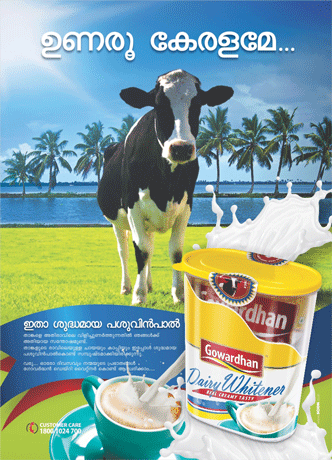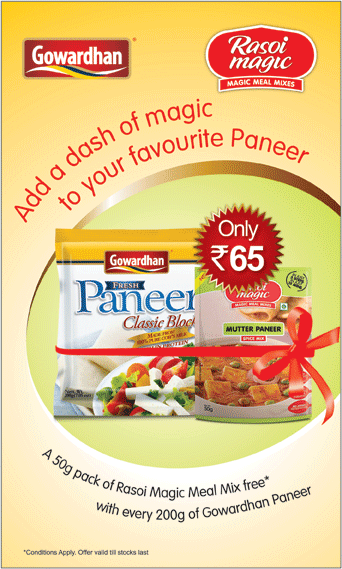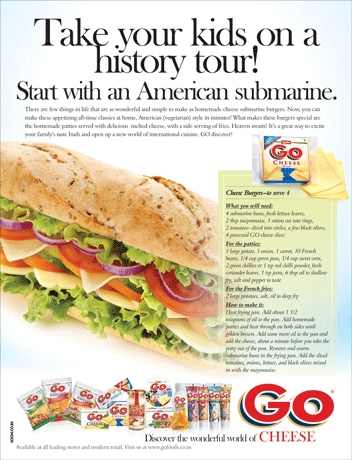
What is the current product and brand portfolio under Parag? Which contribute maximum to revenues?
Parag started as a milk company. Ghee was the first product that we went into the consumer segment with. Our real transition into consumer goods started in 2009 and we have evolved greatly.
The portfolio today is broadly divided into liquid milk which contributes around 20 per cent to our topline. We supply milk in key cities of Maharashtra and South India. The next big category is cheese that contributes 25 to 30 per cent to revenues. The third segment is SMP ( skimmed milk powders) that accounts for 20 per cent. The fourth category is the new product lines (UHT and tetrapak), which account for seven to eight per cent of revenue. Lastly, we have a ‘Fresh’ division comprising of dahi (curd), yogurt, paneer (cottage cheese), which accounts for 15 to 18 per cent.
We primarily have two brands - Gowardhan and Go. If I was to give a personality to the two brands, I would say Gowardhan is a traditional Indian housewife brand. The products are actually ingredients that go into preparations in the kitchen. Gowardhan is our parent brand that has been in existence for 18 years, while Go was incepted in 2008. Go is a young, dynamic brand. It is targeted towards youthful, young, urban consumers. These are the two brands that are known to consumers pan-India. There is ‘Pride of Cows’ which is more specific to Pune and Mumbai, and is a farm-to-home business model. And last year, we launched Topp Up (RTD flavoured milk beverages) in select markets.
How are the brands faring?
Both Gowardhan and Go have a strong footing in the consumer’s mind. We have done dipsticks and analysis with consumers and we fare pretty well. If I was to look at the spread of the brands across the country, then Go will be the front-facing growth driver. Bulk of my investments in terms of creating a brand for the organisation will be spent on Go.
Today, Gowardhan will be twice the size of Go in value terms and in terms of revenue - Gowardhan accounts for 70 per cent of the pie.
So will ‘Go Cheese’ be the growth driver for Parag?
We love cheese and it is our stated intent to be called ‘The cheese people’. Having said that, as we move forward, if our mix today is 70-30, then it is going to change where Go will contribute most to the revenues in future. Cheese will remain the growth driver; we have done wonders with cheese. So the focus is going to be more on the umbrella branding on Go.
The new product lines that are currently at seven to eight per cent in the next two years will grow to 20 per cent. They are under the Go brand.
Over the past two years, Parag has been adding more products to its portfolio. Is it because of the growing competition from regional, national and international players?
It comes down to being very category-specific.
The fact is India is a growing economy. The demographics of the country are very young and hence there will be competition from MNCs. The onslaught is given.In the next three to four years, all the big players from Europe will be in the Indian market; Danone is there currently. Innovation is not a result of the competition. Parag is a category leader and being so, it is the onus of the leader to drive the categories.
For example, for the category of cheese - all India penetration is only 9 per cent. If I was to do an urban-rural divide then urban is close to 20 per cent, and further segregate into metro and non metro, it is only 35 per cent (in metros). So there is phenomenal opportunity for growth. Over the next 20 years, I see cheese as one of the biggest categories that will change the dynamics of the dairy industry.
The biggest challenge in this category is how I get my distribution enhanced. So it requires a huge investment in cold storage facilities in the supply chain. There is a huge capital expenditure required for putting up world class plants. Fortunately, we did it five years ago when our sales were not even three tonnes a day (it is 30 tonnes a day currently).
So someone has to take the initiative and whoever does it will get the first mover advantage.
Secondly, these innovations are also a result of consumer insights that we get when we interact with them. I strongly believe that whenever you are working a market it is always important that apart from a retailer you also speak to the consumers. It is only from consumer insights that you get your triggers. Research is conducted at an organised level but that is more from the point of understanding the pulse of your brand, the categories. But, to get real insights, I encourage people to talk to consumers directly and understand their needs.
In India, which markets do you see as a stronghold for the brand? Why?
The way dairy companies evolve is that they become strong in the place they are located in. We are a homegrown, Maharashtra company with the plant located near Pune, so our strength is the West – Maharashtra, Gujarat. The second plant came up in Andhra Pradesh and this caters to the entire country, so in a sense we are strengthening our distribution across the country. Ideally, I would want Parag to be present in all the villages that have a population of 1,000-plus, but that’s not possible. So we are trying to get our distribution right. If you ask me where my strength is - it is in the West. I now have a strong foothold in the North - primarily in UP, Delhi, hills of Himachal. Our stated intent for the next couple of years is that we want to expand rapidly in the South and North.
We plan to go big in the South as the plant is located in AP and we will have an advantage of doing a lot in the ‘fresh’ categories. The three large metros of South account for large cheese consumption markets, specifically Bengaluru and Hyderabad.
What is the marketing mix generally like for the brands?
We are primarily a TV-led brand and that’s required to be present in the minds of the consumers. But the challenge is that if I do a TVC on cheese and I am not present all over the country, a lot of wastage will happen on TV. So there has to be a focus on print as well.
Currently, our marketing mix is 70 to 80 per cent skewed towards TV and around 15 per cent accounts for press. The balance is on social media and point of purchase. We plan to invest a lot in point of sales as well.
There is a lot of innovation happening at point of sales in terms of visibility, the manner in which you talk to the consumers and so on. Moving forward, I will have an equal split between addressing the consumer at home and the shopper located at the point of purchase. And overwriting this is the internet - one cannot ignore digital today. I would admit that we have been slow in getting on to digital but we have serious plans for the future.
Parag also does a lot of consumer sampling. Being in the food industry, if your consumer tastes your product once, he is yours for life. We do this at modern trade and places of congregation in key towns.
Parag promotes dairy tourism. What is the marketing thought behind it?
We organise one-day picnics for school children where they can come to the plant and see the process of milking, tour the cheese plant and interact with the animals on the farm and so on. The image of the Indian dairy industry in the world is very vague. Hence, we want to showcase to the world our state-of-the-art dairy equipment and machinery. Secondly, once people come and see your plant, the consumer becomes ‘yours for life’. So there is a clear marketing intent behind this.
Parag has various verticals of distribution/sales - general trade, modern trade and institutional sales. Which contributes the most to the sales?
In the consumer business, we distribute through general trade and modern trade. Under institutional sales, we supply to Domino’s, KFC, Pizza Hut and so on. Then there is HoReCa (Hotels, Restaurants, Catering) segment, where Parag caters to hoteliers and other restaurants.
Lastly, we export to 27 countries in a trading model, but in future we want to get into serious consumer brand building. We primarily export powders and ghee now. We will get into paneer, dahi and yogurt in countries with a large Indian diaspora.
Thirty to 35 per cent of our revenues come from general trade while 15 per cent is from modern trade. The balance is from institutional sales. Bulk of the institutional business is for cheese.
(Also, liquid milk is distributed locally; typically 300 kilometres around the plant location.)
Which are the creative and media agencies on board?
Our media buying agency is Madison while Scion in Bengaluru is our brand consultant and creative agency. They have been with us since 2008 and have helped us create consumer brands that you can see today.
In 2014, all our product categories will have new communications. Our marketing budget is four to five per cent of the top line. Our next year’s marketing budget is Rs 75 to 80 crore.
Go Cheezos - Tom & Jerry branding
Gowardhan Ghee
Go Milk - Milk is young again
Gowardhan Dairy Whitener
Gowardhan Paneer
Go Fruit Yogurt
Gowardhan Dahi TVC
Go Cheese - Boy
Go Cheese slices















.jpg&h=334&w=500&q=100&v=20170226&c=1)







.jpg&h=334&w=500&q=100&v=20170226&c=1)

.png&h=268&w=401&q=100&v=20170226&c=1)



.jpg&h=268&w=401&q=100&v=20170226&c=1)
.jpg&h=268&w=401&q=100&v=20170226&c=1)

